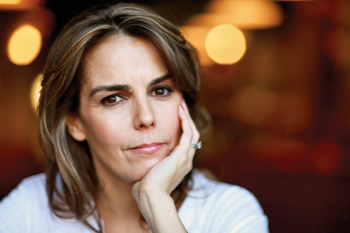Reviewed by Sue Dickman ’89
Photo by Michael Epstein
[Fiction] In 2012 the book I recommended to everyone I knew was Edmund de Waal’s The Hare with Amber Eyes, a memoir that traces his family’s history through a collection of Japanese netsuke. These tiny carvings, which once served as toggles on kimono ties, traveled from 1890s Paris to turn-of-the-century Vienna to postwar Japan and finally to present-day London. It is the memoir of a remarkable family, but it is also the story of how objects can reflect families and histories and lives. The question that concerns de Waal is how “objects embody memory—or more particularly, whether objects can hold memories.” Because The Hare with Amber Eyes spans the 20th century, it is also the story of how people’s lives are upended—sometimes in an instant—by the tide of current events.

It is a testament to Jennifer Cody Epstein’s skills as a writer of historical fiction that de Waal’s book was among the first I thought of on reading her accomplished second novel, The Gods of Heavenly Punishment (W.W. Norton). Epstein’s novel feels like a spiritual cousin to de Waal’s memoir in the way her characters adapt to the conflicted times in which they live. The central act in the book is the March 1945 firebombing of Tokyo, in which half of the city—with 100,000 of its residents—was destroyed. Epstein weaves around this horrifying event the personal stories of several American and Japanese families, particularly that of one woman, Yoshi Kobayashi.
The novel begins with two brief scenes set in 1935: a courting couple on a Ferris wheel at a county fair in upstate New York and a dinner party at the Tokyo-area home of Anton Reynolds, a Czech-born American architect who helped to build the Tokyo of the 1920s and ’30s. Anton, his French wife and their young son, Billy, are entertaining Anton’s best builder, Kenji Kobayashi, his wife, Hana, and their precocious trilingual daughter, Yoshi.
Relationships are set in motion in these two scenes, which echo and reverberate through the novel. One of Epstein’s smartest moves—and one of the most enjoyable aspects of the book—is the structure itself. The book is divided into nine sections set between 1935 and 1962. Some take place in Tokyo, others on an aircraft carrier in the Pacific and in Japanese-occupied Manchuria, among other places. The point of view shifts with each section, giving the reader a multifaceted and complex view of the choices people make in order to survive in a shifting world.
Yoshi is the center around which the novel turns, and three sections are told from her point of view, but the choice to share the narration among other fully fleshed characters is key to the novel’s success. Anton, for example, loves Japan and its architecture but also agrees to assist the U.S. Air Force in determining the best way to destroy it. Yoshi’s father spends the war years building up the Japanese colony in Manchuria. Her mother is glamorous and unhappy, considering her marriage “like death. Or maybe the beginning of dying.”
Epstein instills objects with meaning and uses them to link her characters across time and space. She does this primarily through an ornate silver ring with a green stone. This ring originally belongs to Lacy Richards, wife of one of the “Doolittle Raiders” who launch the first air attack on Japan in April 1942. It ends up on the hand of 15-year-old Yoshi, who is wearing it almost three years later when Tokyo is bombed directly by the Americans.
Epstein has clearly done prodigious amounts of research into World War II, but the book carries its weight gracefully, and I never felt like I was being given a history lesson, though I did finish the book more knowledgeable about the era than when I began. She’s woven a compelling story of how ordinary people survive in extraordinary times, and she’s done it in a way that makes the book assured, evocative and a pleasure to read.
Dickman’s essays have appeared in The Washington Post and elsewhere.